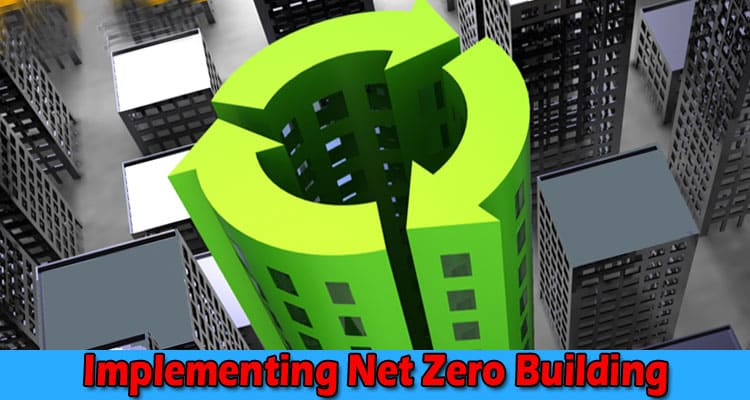Net zero buildings is a sustainable concept that aims to reduce carbon emissions by creating structures that consume as much energy as they generate. It is achieved using renewable energy sources such as solar panels, wind turbines, and geothermal systems. Net zero buildings are becoming increasingly popular as individuals and businesses strive to reduce their carbon footprint and contribute to the fight against climate change.
However, implementing net zero buildings has its challenges. From high initial costs to the need for specialized skills and knowledge, several obstacles must be overcome to achieve a net zero buildings successfully. This article will explore these challenges in-depth and provide solutions for tackling them, making net zero building a more accessible and achievable goal for everyone.
Key Challenges that Company Face While Implementing Net Zero Buildings
Implementing net zero buildings can be challenging for companies due to several factors. Here are some of the key challenges that companies may face when attempting to achieve net zero buildings:
- High Initial Costs: One of the most significant challenges companies face when implementing net zero buildings is the high initial costs. Installing renewable energy sources and energy-efficient technologies can be expensive, and the investment may take some time to pay off.
- Lack of Technical Expertise: Companies may need more technical expertise in implementing net zero buildings. Many technologies used in net zero buildings are new and require specialized knowledge, which may need to be more readily available within the company.
- Building Design and Retrofits: Achieving net zero buildings requires a design that maximizes energy efficiency and reduces energy demand. Retrofitting existing buildings to meet these requirements can be challenging, as it may require significant modifications to the building’s structure and systems.
- Dependence on External Factors: Companies may also face challenges related to external factors beyond their control. For example, renewable energy sources such as wind and solar power may be limited in some regions, making it challenging to generate enough renewable energy to achieve net zero buildings.
- Integration with Existing Infrastructure: Achieving net zero buildings may require integrating renewable energy sources and energy-efficient technologies with existing infrastructure. This can be challenging, as it may require modifications to existing systems and may cause disruptions to ongoing operations.
Solutions to Tackle Challenges
Several solutions can be considered to tackle the challenges that companies face while implementing net zero buildings. Here are some ways to address the key challenges mentioned above:
- High Initial Costs: Companies can seek financial incentives, such as tax credits or grants, to help offset the high initial costs of implementing net zero buildings. Additionally, companies can consider financing options, such as leasing or power purchase agreements, to spread out the costs over time.
- Lack of Technical Expertise: Companies can partner with experts in net zero buildings to gain the necessary technical expertise. This can be done by hiring consultants or working with specialised contractors with experience implementing net zero structures.
- Building Design and Retrofits: Companies can work with architects and engineers to design new buildings prioritising energy efficiency and renewable energy generation. Companies can undertake energy audits for existing buildings to identify areas where energy efficiency can be improved and retrofit those areas accordingly.
- Dependence on External Factors: Companies can mitigate the risks associated with reliance on external factors by diversifying their renewable energy sources. For example, companies can incorporate a mix of wind, solar, and geothermal energy sources to ensure their energy needs are met, even if one source is unavailable.
- Integration with Existing Infrastructure: Companies can plan to integrate renewable energy sources and energy-efficient technologies with existing infrastructure by thoroughly analysing their existing systems. This will help identify areas where modifications must be made and allow for a smooth transition to net zero building.
Begin Implementing Net Zero Buildings Concept Today
Implementing a net zero buildings strategy is daunting and requires professional assistance. You can connect with a service provider with reliable solutions and immense experience in this field. Take a step towards sustainability today!


